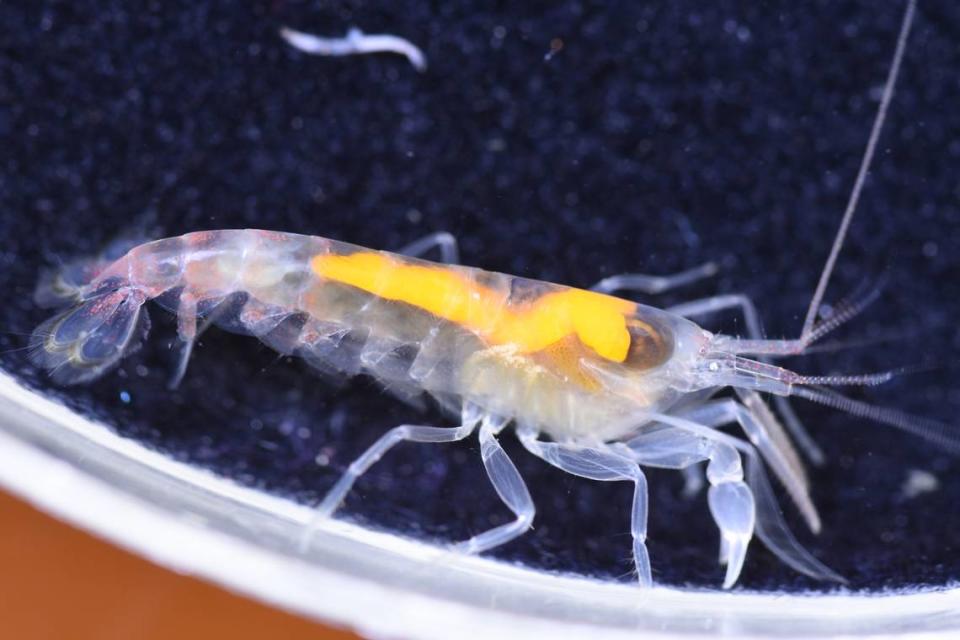See-through creature — with orange ovaries — found in ‘coral rubble’ is a new species
Buried amid some “coral rubble” in the Persian Gulf, a transparent sea creature went about its way. But the animal didn’t stay hidden for long.
Nearby scientists spotted the animal and its brightly-colored insides — and discovered a new species.
Researchers were surveying the seafloor around several Persian Gulf islands in 2019, according to a Sept. 9 study in the journal Crustacean Research. Hidden in the sand, they found two unusually-colored shrimps.
Taking a closer look, researchers discovered a new species: Automate arturi, or Arthur’s snapping shrimp.
Arthur’s snapping shrimp is considered “medium-sized,” with its body reaching about one-fifth of an inch in size, researchers said. It has a smooth and “transparent” body with “scattered” pink cells and bright orange ovaries.
Photos show the new species in a petri dish. The shrimp’s body is a ghostly white color against the black background. Its orange insides look like a piece of chewed-up gum. Small flecks of pink are visible toward its tail and the tips of its appendages.

Arthur’s snapping shrimp was found “near live corals” under up to 16 feet of water, the study said. One shrimp “was found inside a cemented dead bivalve shell.”
Researchers said they named the new species after Arthur Anker, “the undisputed King of alpheid (shrimp) taxonomy.”
The new species has only been found on two islands in the Persian Gulf, Hengam Island and Abu Musa Island, but is “likely more widespread in the region,” the study said.
Abu Musa Island is a disputed territory between Iran and the United Arab Emirates. Iran has controlled the island since 1971, and the UAE claims it as part of its territory, Al Jazeera reported.

The new species was identified by its coloring, body shape and other subtle features, the study said. DNA analysis confirmed the specimens were the same species. Researchers did not provide a comparative DNA analysis between the new species and other snapping shrimp.
The research team included Hossein Ashrafi and Sammy De Grave.
‘Long-tailed’ woodland creature seen licking tree sap in Australia. It’s a new species
Colorful trapezoid-shaped creature found hiding under Taiwan rocks. It’s a new species
Copper-eyed mountain creature — with pointed ‘spurs’ — discovered as new species

